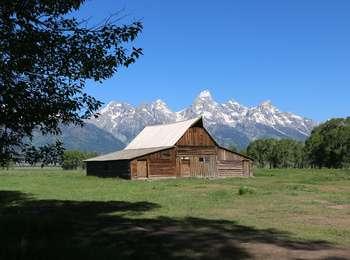Last updated: April 9, 2021
Place
Mormon Row

Historical/Interpretive Information/Exhibits, Restroom, Wheelchair Accessible
The buildings on Mormon Row tell the story of a once vibrant community. The Homestead Act of 1862 promised 160 acres to any person willing to build a house and cultivate the land for 5 years. This act enabled the settlement to come together. The promise of land eventually drew settlers to Mormon Row, originally known as Grovont in the 1890s. Healthy sagebrush indicated richer soil and drew the first Mormon families with hopes of beginning a new life. They constructed of ranches, homes, a church and a school, forming a true community.
Many Mormon Row settlers sold their land and moved on by the mid-1900s. This land was later incorporated into Grand Teton National Park. They moved into Jackson and other surrounding communities. Now we see a landscape of sagebrush, cottonwood trees and quaking aspen. As we watch bison and pronghorn roaming the sagebrush flats, imagine the grazing cattle and hayfields filling the horizon.
Name Origin
Members from the Church of Jesus Christ of Latter Day Saints spread north from Utah and homesteaded on the east side of Blacktail Butte in the late 1880s. Known as Mormons, they settled the community known as Grovont and used their collective efforts to survive in the valley's harsh environment.
